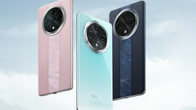
“While it is not quite clear how practical this would be right now, the foldable smartwatch can be a possibility in future.”
OPPO has received a new patent for a smartwatch with a foldable display. The design, while seeming a bit outlandish, is still rather unique, and raises the possibility of a new kind of device that might one day be in production. The concept of the patent describes a smartwatch that has a rectangular display area that is slightly larger than a conventional smartwatch, and the body is certainly thicker than typical watches. The reason for this is that the body stows away the folded part of the display, which then unfolds outward at the touch of a button.

This procedure will be motorised in order to prevent manual pressure from cracking the display, and once unfolded, the screen area will have extended by 2x to create a smartphone-like space. This will essentially give you a full smartphone experience from a device that you can wear on your wrist, which is an unconventional form factor experience for a computing device.
The patent has been further brought to life through digital illustrations by Let’s Go Digital, which show how the device may look like, in flesh. To be honest, it does look a bit awkward — we are not quite sure if too many people would be comfortable wearing something as bulky and heavy on their wrists, even if it transforms into a phone. Depending on the wrist you wear it on, the foldable screen will fold out either towards the inner side of your hand, or outward to your palm. This gives the display area plenty of support underneath as well, which makes it easier to use.

As of now, however, such a device looks set to remain only in the pages of patents. OEMs have been struggling to get the folding phone form factor right, with Samsung’s Galaxy Fold fiasco now well publicised, and the Huawei Mate X still nowhere to be seen. As a result, it is unlikely that any OEM would take the risk of making a device with elements such as foldable displays, motorised sections and a physically unsupported screen area, all of which may be prone to accidental damages. Nevertheless, it is interesting to see the kind of ideas that are floating around, giving us a brief glimpse at what may be the future of personal computing.




![[Update] OnePlus mistakenly announces Google Gemini Ultra AI coming to its phones later this year Thumbnail](https://www.91-cdn.com/hub/wp-content/uploads/2024/04/OnePlus-AI.jpg?tr=h-110,q-100,pr-true)












